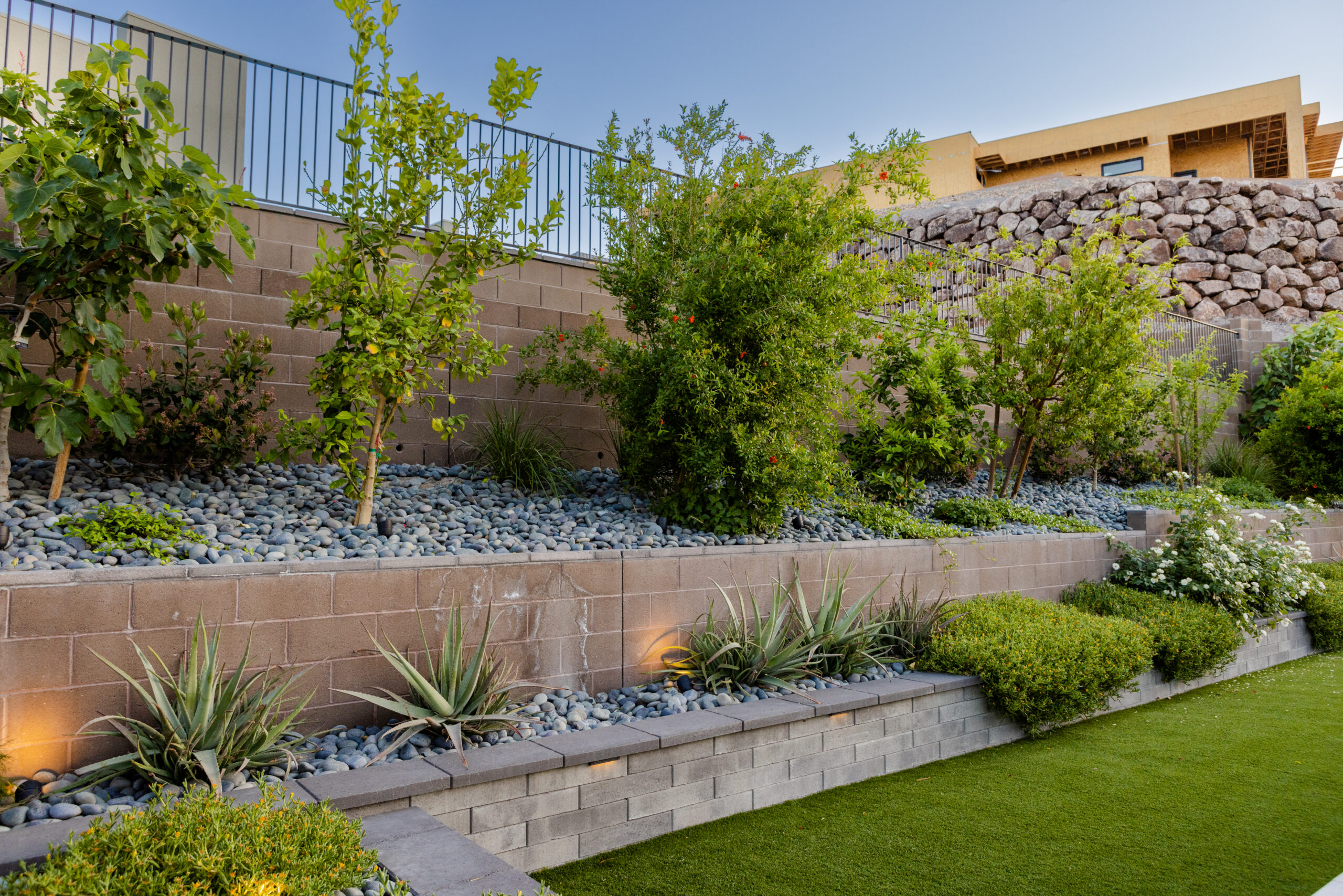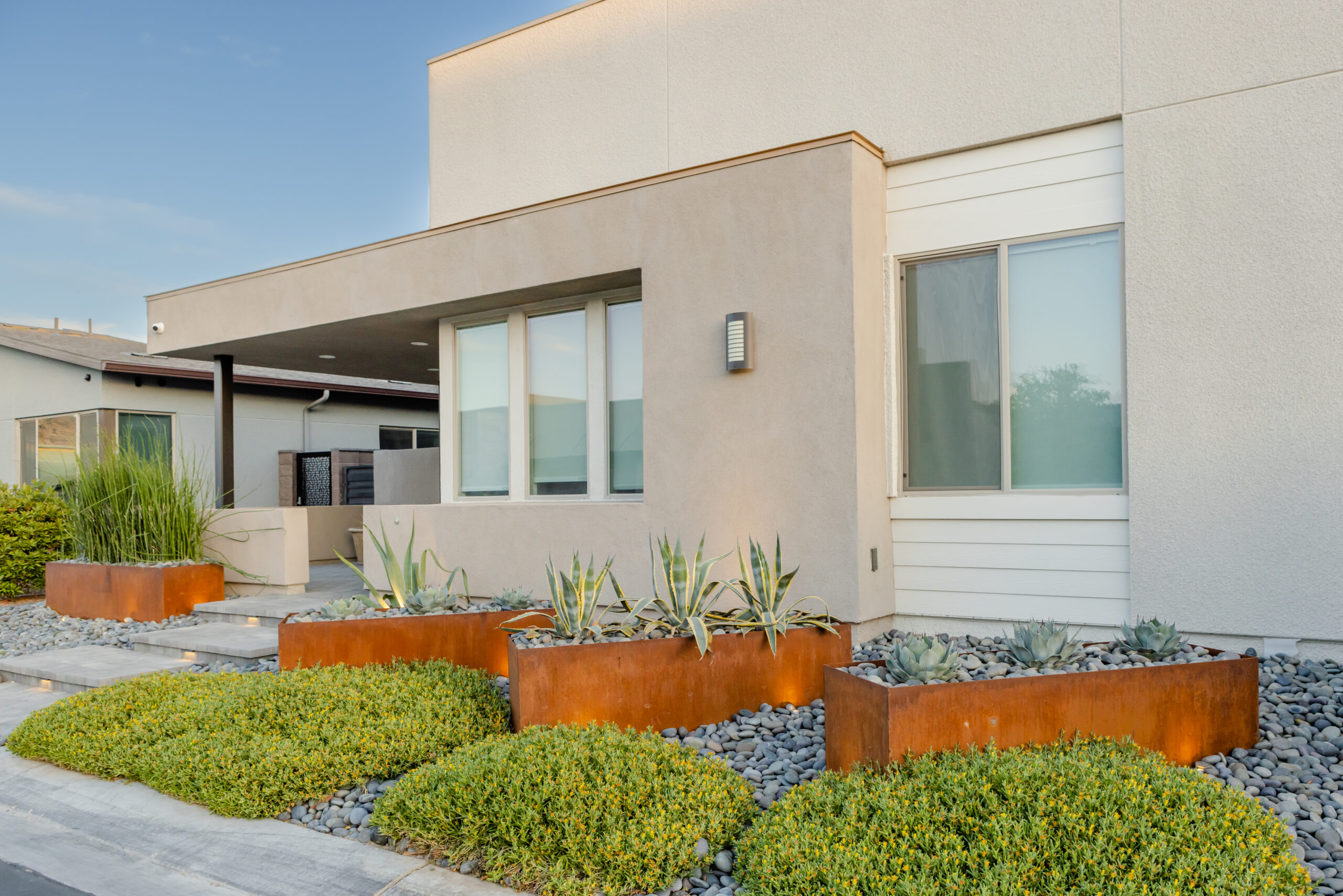As we step into 2025, the world of hardscaping is undergoing a transformative evolution, driven by technological advancements, sustainable practices, and an increasing demand for aesthetic versatility. Hardscaping, the non-plant elements of landscaping that include patios, walkways, walls, and other structural features, has traditionally focused on functionality and durability. However, contemporary trends reveal a burgeoning focus on integrating innovative designs that marry aesthetics with robust engineering. This shift reflects a broader societal commitment to environmental stewardship, urban infrastructure resilience, and enhancing outdoor living spaces.
The latest innovations in hardscaping for 2025 delve deep into the intersection of technology and design, showcasing the emergence of smart materials, customizable modular systems, and eco-friendly solutions. From permeable paving systems designed to manage stormwater runoff effectively to intelligent lighting that responds to the environment and personal preferences, the future of hardscape presents an exciting array of opportunities for both residential and commercial applications. These advancements not only enhance the utility and visual appeal of outdoor spaces but also prioritize sustainability, addressing pressing concerns like urban heat islands and biodiversity loss.
Moreover, the push for adaptable outdoor spaces has led to innovations that cater to the ever-evolving needs of urban dwellers, including multifunctional furniture integrated into hardscape designs and surfaces that promote wellness. As communities continue to evolve, the emphasis on social interaction, accessibility, and resilience shapes the way we conceive and execute hardscape projects. In this article, we’ll explore the most significant hardscape innovations poised to make waves in 2025, highlighting how these advancements can create dynamic, sustainable environments that reflect the values and aspirations of modern society.
Sustainable Materials and Eco-friendly Hardscaping
In recent years, the movement towards sustainability has increasingly infiltrated the field of hardscaping, where traditional materials are being replaced or enhanced with eco-friendly alternatives. Sustainable materials used in hardscaping encompass anything from permeable pavers made from recycled content to composite materials that blend renewable resources with durability. Eco-friendly hardscaping goes beyond merely using sustainable materials; it also involves designing outdoor spaces that enhance biodiversity, promote water conservation, and reduce urban heat. As we look toward 2025, innovations in this space are expected to amplify, with new materials that not only perform well but also contribute positively to the environment.
One of the notable innovations on the horizon is the use of bioplastics and renewable materials derived from agricultural byproducts. These materials can provide the desired aesthetic while reducing reliance on traditional plastic and petroleum-based products. Another growing trend is the adaptation of local materials, which minimizes transportation emissions and supports local economies. Cities are learning to integrate natural stone, reclaimed wood, and other regional materials into their hardscape design, reinforcing community identity while promoting sustainability.
Furthermore, permeable hardscaping solutions are gaining traction as they provide effective stormwater management by allowing rainwater to infiltrate the surface rather than pooling or creating drainage issues. Such designs mitigate flooding risks and recharge groundwater supplies. Innovations in permeability technology are expected to evolve, offering better structural integrity alongside enhanced aesthetic options that do not sacrifice beauty for functionality. In 2025, these advancements will likely place eco-friendly practices at the forefront of hardscaping, providing the dual benefit of attractive landscapes and environmental stewardship.
Ultimately, sustainable materials and eco-friendly hardscaping represent a paradigm shift in landscape design. They cater to the increasing consumer demand for environmentally responsible practices while ensuring resilience and functionality in outdoor spaces. This holistic approach is set to redefine landscaping in urban and suburban areas, fostering a harmonious relationship between the built environment and nature.
Smart Hardscape Technologies
Smart hardscape technologies represent a significant advancement in outdoor landscaping and construction. These innovations integrate technology into hardscaping elements, such as patios, pathways, and retaining walls, to enhance their functionality, efficiency, and user experience. As we look toward 2025, various smart technologies are set to transform traditional hardscaping into interactive spaces that respond to environmental and human inputs.
One of the primary trends in smart hardscape technologies is the incorporation of sensors and automation systems. For example, smart paving stones can be embedded with sensors that detect pedestrian movement, which can be used to adjust lighting or heating systems surrounding the hardscape area. This approach not only increases safety by providing appropriate lighting when foot traffic is detected but also enhances energy efficiency by ensuring that resources are used only when necessary. Additionally, systems that manage irrigation more effectively are becoming more prevalent, using weather data and soil moisture levels to optimize water usage in outdoor gardens and landscapes.
Another innovation gaining traction is the integration of permeable hardscaping materials that work in conjunction with smart technology to manage stormwater runoff. These materials, combined with IoT (Internet of Things) sensors, can collect data on rainfall, soil saturation, and drainage efficiencies, allowing for real-time management of water flow. This integration helps mitigate flooding and aquifer depletion by directing excess water to designated areas or utilizing it for irrigation purposes.
Furthermore, advancements in hardscape materials have also led to the development of self-heating or self-cleaning technologies that respond to weather conditions. For instance, heated driveways or walkways can melt snow and ice during winter, improving safety without the need for manual snow removal. Similarly, self-cleaning surfaces utilize photocatalytic materials that break down pollutants when exposed to sunlight, reducing maintenance needs and keeping aesthetics intact.
As we see a rise in urbanization, smart hardscape technologies are poised to address issues related to sustainability, energy efficiency, and environmental protection. The convergence of technology with traditional hardscape design not only leads to more functional outdoor spaces but also encourages smarter living and greater connectivity between natural and built environments. With ongoing research and development, the coming years promise to expand the capabilities and applications of these smart technologies even further, making them indispensable in modern landscaping and urban planning.
Modular and Flexible Hardscape Designs
Modular and flexible hardscape designs have become increasingly popular in recent years, driven by the need for more adaptable and efficient outdoor spaces. These designs enable landscape architects and homeowners to create dynamic environments that can easily change or evolve over time. One of the key advantages of modular systems is their ability to be constructed using pre-fabricated elements, which simplifies installation and reduces labor costs. These components can be rearranged, expanded, or repurposed, providing flexibility to adapt to changing needs, styles, or trends.
As we look to 2025, there are several innovative trends and technologies emerging within the realm of modular hardscape designs. For instance, advancements in materials and manufacturing processes are leading to the creation of lightweight yet durable modular units that can withstand various environmental conditions while maintaining aesthetic appeal. These modular components often come in a range of colors and textures, allowing for customization in design. Further, they can integrate seamlessly with natural elements, including plants and water features, creating cohesive and harmonious outdoor spaces.
Another notable trend is the integration of technology into modular designs. With smart hardscape technologies gaining traction, the future of outdoor spaces may include built-in lighting systems, smart irrigation solutions, and even sensors that can monitor environmental conditions. This integration not only enhances functionality but also promotes sustainability by optimizing resource usage.
Moreover, modular design encourages a do-it-yourself (DIY) culture, empowering homeowners to take control of their outdoor spaces. With easy-to-follow designs and readily available components, it becomes increasingly accessible for individuals to create or modify their hardscape elements. This trend aligns with the growing movement toward personalized living spaces, catering to diverse taste and lifestyle preferences, and fostering a sense of ownership and connection to one’s environment.
Overall, as modular and flexible hardscape designs continue to evolve, they are likely to incorporate new materials, technologies, and creative strategies that not only enhance aesthetic appeal but also promote efficiency, sustainability, and personalization in outdoor living. This evolution reflects a broader trend toward adaptable spaces that meet the demands of modern life.
Innovative Drainage Solutions
Innovative drainage solutions are becoming increasingly crucial in hardscape design as cities continue to grapple with the impacts of climate change, including intense rainfall and flooding. These advancements focus on managing stormwater more effectively while enhancing the aesthetic value of outdoor spaces. New technologies and materials have emerged to facilitate better drainage, prevent erosion, and minimize water pooling in hardscape areas. Permeable pavements, for instance, allow water to infiltrate through surfaces that traditionally retain it, reducing runoff and promoting groundwater recharge. These surfaces are designed with a matrix of materials—such as porous concrete and interlocking pavers—that create voids for water to pass through.
In 2025, the trend toward environmentally responsible hardscaping will see innovations like bioretention systems integrated into urban landscapes. These systems utilize vegetation and soil to filter and manage stormwater. With the integration of smart technology, these innovative drainage systems can monitor moisture levels in real time and adjust drainage effectiveness accordingly. This technology not only alleviates immediate water management challenges but also contributes to broader ecological goals by reducing pressure on conventional stormwater systems and mitigating urban heat effects.
Furthermore, the use of permeable retaining walls that allow water to flow through while maintaining structural integrity will gain traction. This synergistic approach ensures that both aesthetics and functionality are addressed. The materials used in these innovative solutions are often selected for their sustainability, offering builders and homeowners the option of eco-friendly, long-lasting choices that require less maintenance over time. As we look towards 2025 and beyond, the marriage of design ingenuity and technology in drainage solutions promises to create resilient, functional outdoor spaces that harmonize with the natural environment while facing the challenges of increased urbanization and extreme weather conditions.
Enhanced Aesthetic Finishes and Textures
In the world of hardscaping, the visual appeal of outdoor spaces has become an essential factor for homeowners and landscapers alike. Enhanced aesthetic finishes and textures elevate the design, creating environments that are not only functional but also visually striking. This trend emphasizes the importance of craftsmanship and artistry in hardscape design, moving beyond traditional concrete and stone to incorporate a variety of innovative materials and techniques.
In 2025, one of the most notable innovations in aesthetic finishes involves the integration of unique surface treatments and texturing methods that enhance the natural beauty of materials. For example, advanced stamping techniques can replicate the look of natural stone, wood, or even intricate patterns, offering homeowners a wide array of options to achieve their desired aesthetic without the maintenance issues often associated with real materials. Additionally, manufacturers are experimenting with new composite materials that combine the advantages of durability and low maintenance with stunning finishes, allowing for greater customization and a more personalized look.
Color is another vital aspect of enhanced aesthetics in hardscaping. Advancements in pigment technology are enabling designers to create vibrant and lasting colors that withstand the elements and retain their appeal over time. These pigmented finishes can be incorporated into various outdoor elements, such as pavers, wall systems, and decorative aggregate, ensuring that hardscape designs complement the natural surroundings. The trend also leans toward integrating contrasting textures within a single project, where smooth surfaces are paired with rough-hewn finishes to create visual interest and depth.
Recent innovations also highlight the importance of sustainability in achieving aesthetic goals. As consumers increasingly prioritize eco-friendly options, more manufacturers are developing finishes that incorporate recycled materials or utilize renewable resources. These sustainable alternatives not only reduce environmental impact but also provide unique textures and finishes that can distinguish a project. As we move into 2025, the confluence of creativity, sustainability, and technology in aesthetic finishes and textures is set to redefine hardscape design, leading to outdoor spaces that are truly remarkable and individualized.





